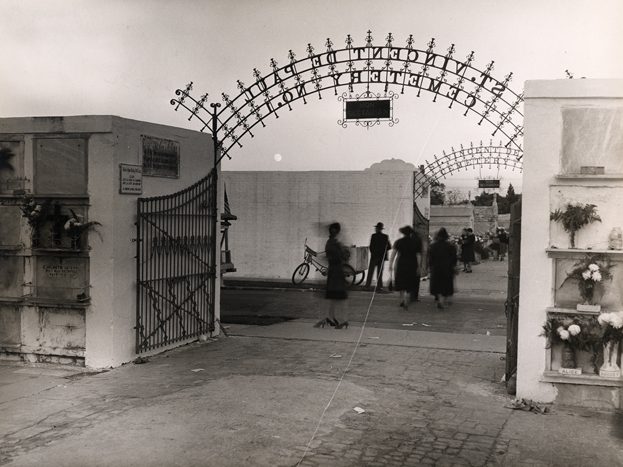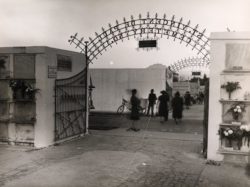Clarence John Laughlin
Clarence John Laughlin was one of New Orleans' most renowned twentieth-century photographers and, at the same time, among the least understood.

Courtesy of The Historic New Orleans Collection
The Day of the Dead. Laughlin, Clarence John (Photographer)
Clarence John Laughlin was one of New Orleans’s most renowned twentieth-century photographers and, at the same time, among the least understood. While some consider his work to be the epitome of romance, others see it as surrealist, fantasist, or symbolist. Some photos depict fantasy yet are seemingly straightforward documentary images. Elements of all of these leanings can be found in Laughlin’s work, which sprang primarily from his love for New Orleans and Louisiana and from his desire, as he wrote, to create “purely visual poetry.”
Born August 10, 1905, in Lake Charles, Laughlin moved to New Orleans with his family as a young child and lived there for most of his life. His father is credited with instilling in him a deep love of books and literature, and he became an ardent bibliophile. After teaching himself photography, Laughlin landed a position with the Works Progress Administration’s Historic American Building Survey during the Depression. His early career also included photographic work for the U.S. Army Corps of Engineers, the Office of Strategic Services, and Vogue magazine. For several years he worked as a freelance architectural photographer.
In some of his best-known work, Laughlin employed multiple exposures and other techniques to depict the devastation wrought by time and neglect and “to probe the intangible psychological jungle in which every object is enmeshed.” In opposition to documentary or pictorial photography, his photographic work, he wrote, encompassed “the third world of photography,” images that concerned “inner perceptions and compulsions….intuition and symbolism.” The result was often mysterious and beautiful, startling and bizarre. “I am not primarily interested in the camera as a recording mechanism,” he wrote, “but, rather, in its possibilities as an extension of the inner eye.”
He made the majority of his 17,000 large-format negatives of Louisiana plantations, cemeteries, New Orleans buildings, still lifes, and city scenes between 1935 and 1965. His images, considered by many to be the first surrealist photographs in the United States, were published in several books, including New Orleans and Its Living Past (1941) and Ghosts Along the Mississippi (1948). He died January 2, 1985. The New Orleans Museum of Art and the Historic New Orleans Collection house much of his work, and the New Orleans Photo Alliance has recently honored Laughlin by establishing an award in his name.
